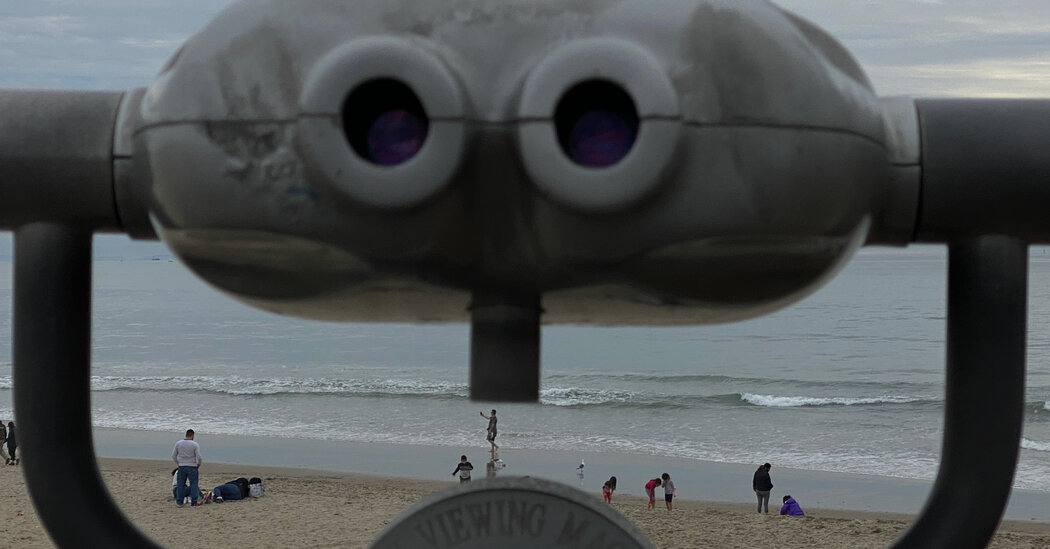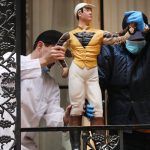
In the year since the pandemic began, people learned to be together while apart and navigated the pain of feeling apart while together. Screens, small and large, became crucial links to the rest of the world.
Activities and routines that commanded crowds — visiting museums, attending concerts, working out, learning, traveling, partying — ceased or found a new life online. Holidays usually celebrated by family gatherings became fraught with consequences.
Memories of a prepandemic world, where people could stand shoulder to shoulder with faces bare, began to feel like dreams — as did moments of unexpected connection.
In other cases, being confined together made couples stronger. Engagements and pregnancy announcements seemed to pop up constantly on social media. And there were plenty of weddings.
For many of those who were single, dating felt impossible in the early months of the pandemic. Sex toy sales increased. Eventually, emotional and physical needs began to weigh heavy, and people across the country found ways to meet and hook up within the confines of their comfort.
Young people around the world, cut off from their usual social lives, faced a “mental health pandemic.” In one study, almost one-third of the teens interviewed said they had felt unhappy or depressed.
On the other end of the age spectrum, older adults were deprived of seeing their children and grandchildren. Some spoke to them through panes of glass. Retirees put off plans that had been years in the making, like travel and volunteer work. Inside nursing homes, Covid-19 outbreaks became all too regular, with more than 163,000 residents and workers dying of the virus.
Though some Americans were able to hole up at home, their kitchen tables and couches converted into makeshift offices, others continued to work in public spaces. Delivery drivers dealt with health risks, theft and assault. Airline workers who weren’t furloughed had to confront passengers who refused to wear masks.
Perhaps no group of workers felt as isolated as those in medical care. In the spring, hospital staff around the country dealt with the gut-wrenching horrors of a steep surge in cases. But the stress didn’t relent when the case numbers did, and it grew again as infections rose in the fall. Doctors and nurses agonized over putting their families at risk, and dealt with intense burnout and pay cuts. Some said that being characterized as heroes by the public left them little room to express vulnerability.
Grief and loss defined the last year. Around the world, the virus has taken millions of lives and left the mourning deprived of the usual rites. Funerals and final goodbyes took place over video calls, if at all. Widows and widowers joined online bereavement groups to process the pain of loss in isolation.
But things have opened up, slowly, over the last few months, as cases have fallen and people have become inoculated. This week, President Biden promised that there will be enough vaccine doses for every American adult by May, and the Centers for Disease Control and Prevention announced that vaccinated people can begin gathering indoors again — a sign that people will soon be finding their way back to each other.
If you’re wondering what comes after, we are, too.
Are you anxious that things will never be the same? Or are you fearful that we’ll return to “the same” much too quickly? Or maybe there is something seemingly small that you will cherish being able to do? Let us know.







